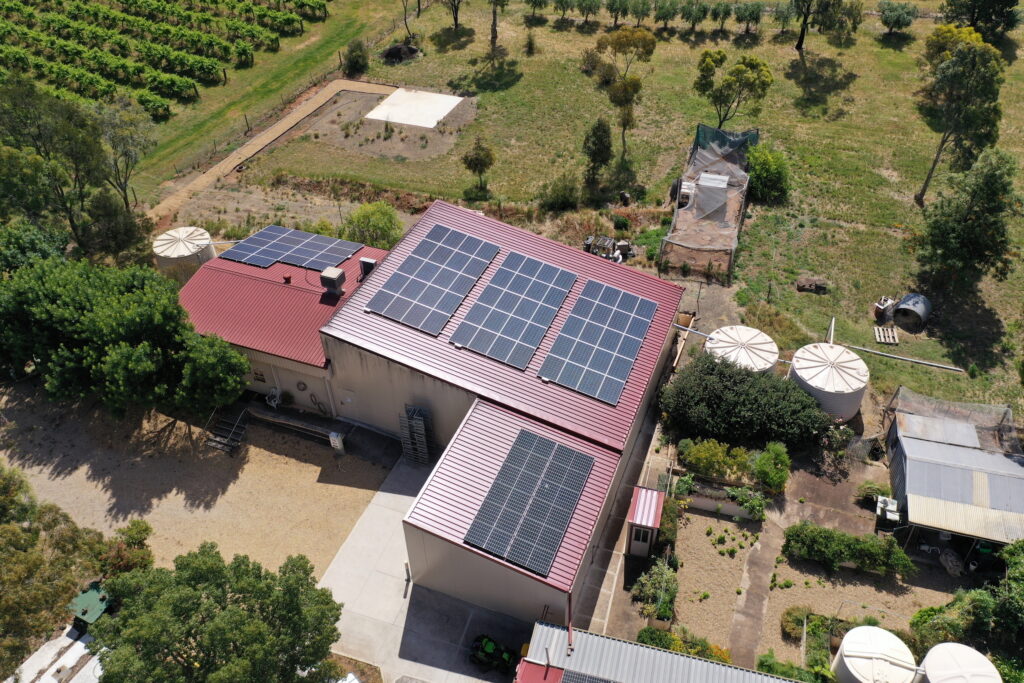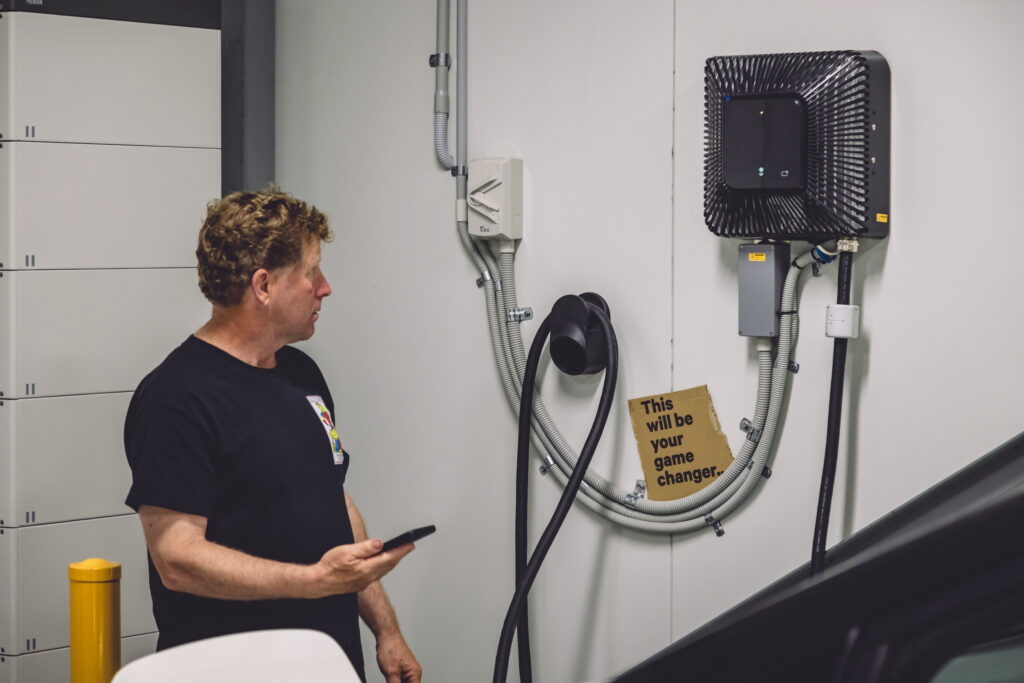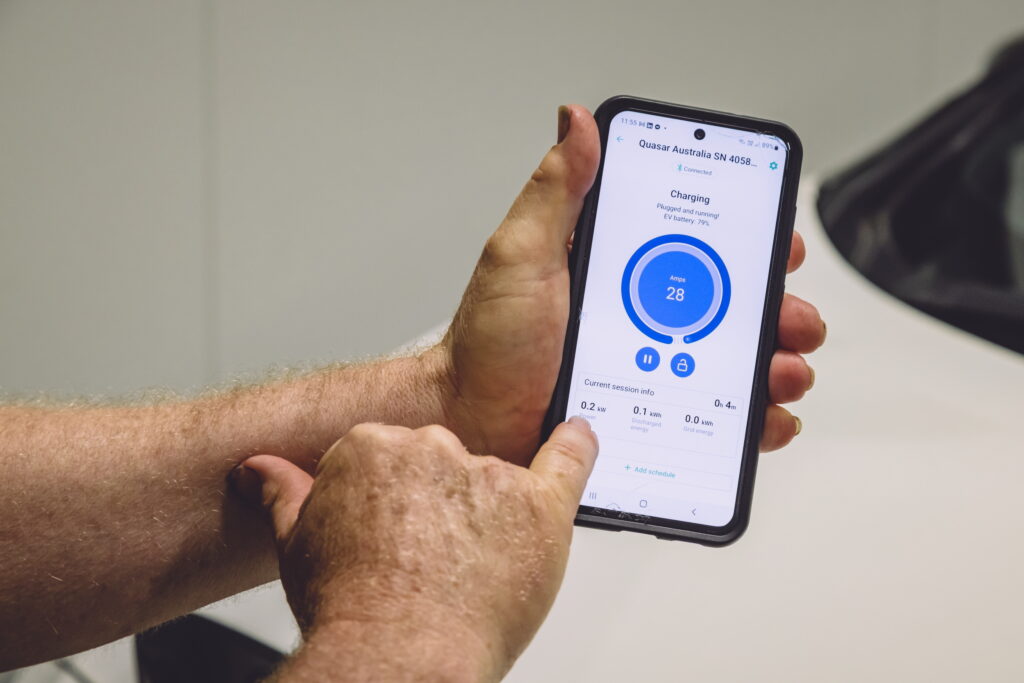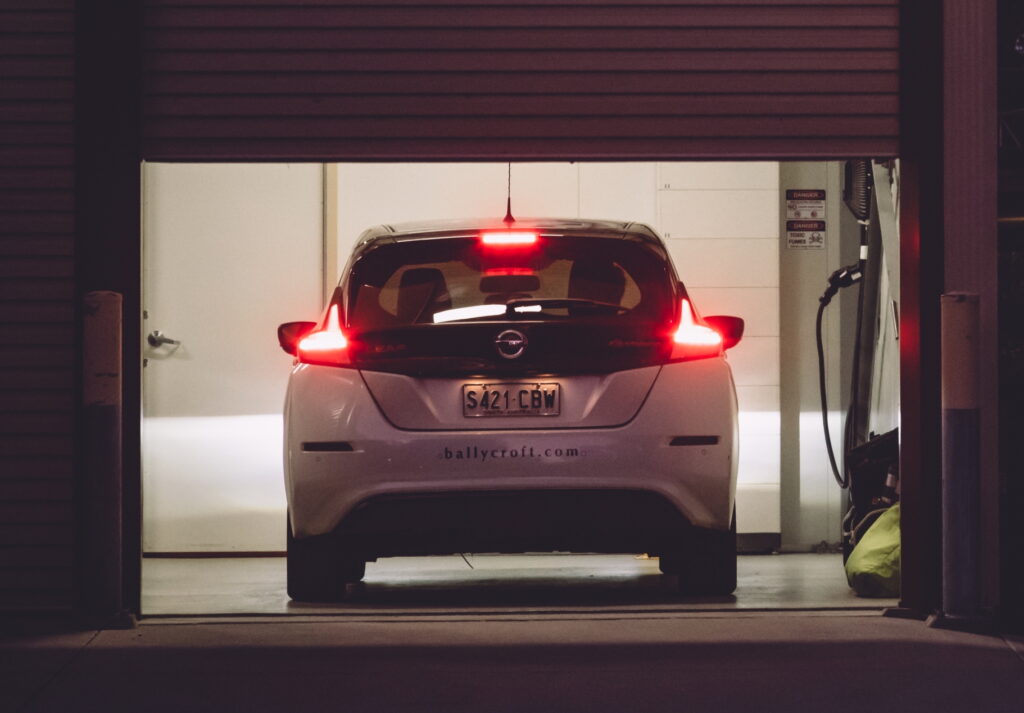V2G tech takes next step in Australia with Nissan Leaf making money from the grid
Vehicle-to-grid EV charging technology has arrived in Australia – or, at least, one small part of it.
A Nissan Leaf owned by Barossa winemaker Joseph Evans has become the first car to be connected to the electricity grid in South Australia.
It’s a milestone for the bi-directional charging technology that has been bogged down in years of delays as Australian regulators and energy retailers set the framework for the V2G system that has the potential to eliminate power bills.

The $50,990 (plus on-road costs) Nissan Leaf that is owned by the Ballycroft winery in the Barossa Valley is being charged from a circa-30kW solar system that also provides power to the winery during the day.
READ MORE: $10,500 for 22kWh: Leaf e+ goes up against Tesla Powerwall
The first customer installation of V2G tech was enabled by the South Australian Power Network (SAPN) as one of the first pilot sites for the technology; customers need to apply to SAPN to be considered for a similar pilot program.
“This is a game-changer, and I wanted to be right at the front of the queue to have V2G installed,” says winemaker Evans of the V2G system.

He says the V2G technology has turned his power bill into a small profit maker.
“I’ve gone from a $6000 annual power bill to making around $50 per week in profit selling my excess power back to the grid,” says Evans.
There are already V2G trials underway in Australia – including one involving 51 Nissan Leafs in the ACT – but the Ballycroft winery Leaf is the first from a paying customer to be connected to the electricity grid and gives a glimpse of the potential for the technology.
Of course, most of the power savings come from the vast solar array, one of the sizeable capital investments made to help reduce the winery’s power bills.

Enabling V2G capability also requires the fitment of a bi-directional charger, which currently costs upwards of $10,000.
In Evans’ case he used a Wallbox Quasar fitted by infrastructure provider Jet Charge.
Despite the significant outlay, Ballycroft should repay the investment within years.
Evans said his annual power bill was about $6000 – and rising.
He says the solar system providing power when the sun is out reduced that bill by about $4000 and the Leaf with V2G functioning is taking care of the final $2000 annual electricity bill.

And he’s now banking around $50 per week by selling excess electricity back to the grid.
”Instead of paying for my power, I’m getting paid for my power,” says Evans. “That is more than $2500 in annual profit, from what was once a significant cost. And what’s even better is the fact that, while fuel and electricity prices are only heading in one direction – and that direction is up – my costs are fixed, and fixed at zero.”
While the EV industry is marching forward with new models and fast-advancing technology, V2G is currently in its infancy.
The Leaf is the only battery electric vehicle that currently supports V2G technology, while the Mitsubishi Eclipse Cross PHEV and Outlander PHEV also provide bi-directional charging functionality.
But other V2G electric vehicles are on the way, with many manufacturers stating their intention to offer it in future.
The Leaf and Outlander’s V2G capability comes from the CHAdeMO DC charging port, which is a rarity on EVs in Australia. The more commonly used CCS Combo charge port was recently certified globally for V2G tech and is expected to support bi-directional charging in production vehicles over coming years.
Another technology that is more common in EVs currently is vehicle-to-load, or V2L.
V2L provides a power supply that can be used to power anything that plugs into a standard 230V powerpoint. That includes camping gear, lights, laptops or even to charge other EVs, albeit for a slow charge.
Vehicles that currently support V2L in Australia include the Hyundai Ioniq 5, Kia EV6, Genesis GV60 and BYD Atto 3.













